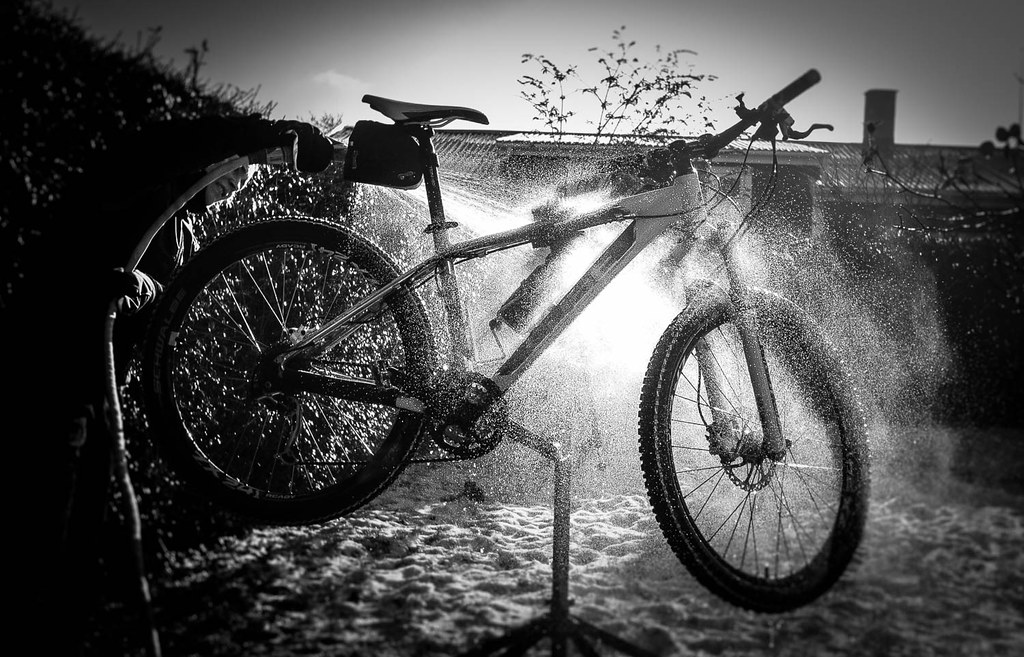Knowing how to wash a bike is a fundamental skill that every cyclist should master to ensure the longevity and performance of their bike. Proper maintenance, starting with regular cleaning, is essential for preserving your bike’s functionality and appearance.
In this comprehensive guide, we will walk you through the step-by-step process of washing your bike effectively. From gathering the necessary materials to executing the final rinse, each stage is meticulously detailed to accommodate cyclists of all experience levels.
By following these instructions diligently, you can not only maintain the aesthetic appeal of your bike but also extend its lifespan by protecting it from corrosion and mechanical issues. So, let’s find out how to wash a bike and help you keep your ride in top condition for years to come.
Basic Bike-Cleaning Supplies
To keep your bike in top condition, a comprehensive cleaning kit is essential. The following are the required materials:
- Biodegradable cleaner to remove tough dirt.
- Set of brushes of varying sizes: a larger brush for the frame and wheels and smaller ones for the intricate parts.
- Microfiber cloths for drying and polishing.
- Degreaser for the drivetrain to remove grease and grime.
- Bucket and hose or pressure washer for rinsing bicycle.
- Chain cleaner tool.
- Lubricant to apply after the bike is dry.
With these supplies, you’re well-equipped to maintain your bike’s cleanliness and performance.
How to Wash a Bike?
Below are 5 steps you should follow to learn how to wash your bike:
1. Set Up
Preparing your bike for a wash begins with choosing the right spot. Opt for a shaded area to prevent soap from drying too quickly and leaving residue. Ensure the ground is stable, and water can drain away easily.

Before you start, remove any accessories like bags or electronics to avoid water damage. Inspect your bike for any damage; addressing mechanical issues beforehand prevents water from aggravating them.
Once everything is set, gently rinse your bike with water, starting from the top and working your way down. This initial rinse helps to soften and remove loose dirt, making the cleaning process more effective and protecting your bike’s finish from being scratched by grit during the wash.
Remember, a thorough pre-wash setup is just as important as the wash itself for maintaining your bike’s pristine condition.
2. Drivetrain
The drivetrain is the powerhouse of your bike, and keeping it clean is vital for optimal performance. Begin by applying a degreaser to the chain, cassette, and chainrings, allowing it to break down the oil and dirt.

Use a chain cleaning tool or a firm brush to scrub these components thoroughly, ensuring that you reach all the nooks where grime hides. Rinse off the degreaser with water, and then dry the drivetrain with a clean cloth.
Once completely dry, apply a chain lubricant evenly across each link. This not only protects against corrosion but also ensures smooth gear shifts and extends the life of your drivetrain.
Regular cleaning and lubrication of the drivetrain will keep your rides smooth and your bike components in good condition. Remember, a well-maintained drivetrain equals a more enjoyable cycling experience.
3. Frame and Components
When washing your bicycle’s frame and components, it’s best to use a bike-specific cleaner or mild soap that won’t harm the finish. Begin by gently applying the cleaner with a soft brush or sponge, carefully working around all areas of the frame, paying special attention to joints and crevices where dirt tends to accumulate.

For components like derailleurs and pedals, use a smaller brush to get into tight spaces. After scrubbing, rinse the bike thoroughly with water to remove all soap residue. It’s important to ensure that no cleaner remains, as it can attract dirt or degrade the lubricants that keep your bike running smoothly.
A thorough rinse also helps to prevent streaks and spots on the frame, leaving your bike looking as good as new and ready for your next ride.
4. Wheels
Maintaining clean bicycle wheels not only enhances the appearance of your bike but also improves its performance and longevity. Start by selecting a cleaner designed specifically for bicycles to ensure it’s gentle on the materials yet effective against grime.

Apply the cleaner liberally, focusing on areas where dirt accumulates. Take a soft brush or non-abrasive sponge and gently scrub the wheels, spokes, and surrounding components to dislodge any stubborn dirt.
It’s important to cover all surfaces, reaching into the nooks where debris tends to hide. Once you’ve thoroughly scrubbed the wheels, rinse them with a steady stream of water, ensuring all soap and loosened dirt are washed away.
This process not only keeps your wheels in prime condition but also prevents buildup that can affect your ride’s smoothness and safety. Regular cleaning is key to a well-maintained bicycle, ready for your next adventure.
5. Drying and Polishing
Apart from learning how to wash a bicycle, maintaining the aesthetic and functional integrity of your bicycle post-wash is also essential. Towel-drying is the first step; using a microfiber cloth, meticulously wipes down every component to eliminate excess water, which can lead to corrosion over time.

Attention to detail is key, especially in moisture-prone areas like the chain and gear sprockets. Once the bike is thoroughly dried, it’s time to apply a protective layer. A product like Muc-Off Bike Protect is an excellent choice.
This spray not only imparts a radiant sheen to your bicycle’s frame but also acts as a barrier against pollutants. Its formulation is designed to displace moisture from nooks and crannies, further preventing rust.
Moreover, it reduces the adhesion of dirt on future rides, simplifying cleaning tasks down the line. Regular use of such a protectant after each wash can significantly enhance your bike’s longevity and performance.
By incorporating this two-step process into your routine, you ensure that your bicycle not only looks great but is also primed for optimal functionality, ride after ride. This methodical approach to bicycle care is not only practical but also ensures that your bike remains in top condition.
More on Bike Cleaning and Maintenance
Bike cleaning and maintenance go beyond mere aesthetics; it’s about preserving the functionality and extending the lifespan of your ride. After a thorough cleaning, lubricating the moving parts is essential.

Use a quality lubricant like WD-40 Bike All Conditions Lube to ensure the smooth operation of gears and chains. Apply it sparingly and wipe off any excess to avoid attracting dirt. Regular inspections for wear or damage can prevent costly repairs down the line.
Look for frayed cables, worn brake pads, or cracks in the frame — these are signs that parts may need replacing. Finally, proper storage is crucial. Keep your bike in a dry, secure place to protect it from the elements and potential theft.
If space is limited, consider a wall mount or ceiling hook to keep it off the ground. By following these steps, you ensure that your bike remains reliable, safe, and ready for your next journey, whether it’s a daily commute or a weekend trail ride.
This proactive approach to bike care guarantees that your two-wheeled companion will be with you for miles to come.
How do I Clean My Bike in Winter?
Cleaning your bicycle in winter requires a gentle approach to prevent damage from road salt and grime. Start by rinsing your bike with lukewarm water to loosen the dirt. Use a mild soap and a soft brush to clean the frame and components, ensuring you reach the nooks where salt can accumulate.

Dry your bike thoroughly to avoid rust, and apply lubricant to the chain and moving parts. The difference between summer and winter cleaning lies in the frequency and thoroughness. In summer, a quick hose down might suffice, but winter demands more frequent and detailed cleaning to combat the corrosive effects of winter road treatments.
Additionally, winter lubricants are designed to resist cold temperatures and should be used to maintain optimal performance. Remember to inspect your bike for wear and tear, as winter conditions can accelerate damage.
By following these steps, you can keep your bicycle in top condition, even in the coldest months.
Conclusion
How to wash a bike effectively is not just about keeping it looking good; it’s integral to ensuring optimal performance and durability. Regular maintenance, including cleaning, is vital for any cyclist who values their ride.
By establishing a routine, you safeguard the bike’s condition and ensure a smoother, safer cycling experience. This practice not only prolongs the life of your bike but also connects you more deeply with your cycling routine.
So, take the time to care for your bike, and it will reward you with reliability and the pure joy of riding.
FAQs
Yes, Dawn dish soap is safe for bike washing due to its grease-cutting formula.
Wash your bike every 1-2 weeks or more frequently based on use and weather conditions.
Using shampoo isn’t ideal due to its chemical composition, prefer bike-specific cleaners for better results.
With proper tools and cleaners, you can effectively wash your bike at home.



